|
Defined as the region of land
between India to the west, China
to the north, and the Pacific
Ocean to the east, Southeast
Asia today comprises 10
countries: Brunei, Cambodia,
Indonesia, Laos, Malaysia,
Burma, the Philippines,
Singapore, Thailand (Siam), and
Vietnam.
Allah Almighty speaks
of traveling to different lands
in the Qur’an. Today we find the
essential foundations of faith
in all Muslim countries, yet we
have regional interpretations,
from the apparently traditional
interpretation found in rural
Thailand to the dynamic face of
Islam in Singapore. Thus while
we can trace the route of Islam
when it spread into certain
countries, we can also see how
the synthesis of pre-Islamic
regional culture and the
teachings of Islam created
different communities, all of
which share the same common
foundations.
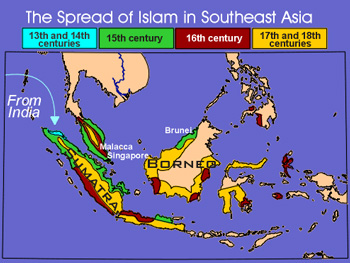 From
the early days of Islam we know
of two routes eastwards: the
land route and the sea route to
China which, for example, the
uncle of the Prophet Muhammad
(peace be upon him) Saad ibn Abi
Waqqas sailed. From
the early days of Islam we know
of two routes eastwards: the
land route and the sea route to
China which, for example, the
uncle of the Prophet Muhammad
(peace be upon him) Saad ibn Abi
Waqqas sailed.
Accounts of how Islam spread
to this region vary according to
different translations. Credit
should be given to Professor
Masud ul-Hassan, whose large
text History of Islam, Vol. II,
I used as a primary source.
Vietnam: 11th Century
The Kingdom of Chams flourished
in Vietnam until the 17th
century. Between 1607 and 1676
the King of Champa accepted
Islam. The area where the king
and his settlers lived is known
as Kompong Cham and they settled
along the Mekong River in
Vietnam in a group of 13
villages. Throughout this period
the children would be sent to
Kelanten (Malaysia) to study the
Qur’an and Islamic studies, and
would return to teach others in
their village.
During the 17th century the
Champa provinces were gradually
conquered by the Vietnamese. The
Vietnamese king Minh Mong
persecuted the Champa, as a
result of which the Champa
Muslim king Po Chen gathered his
people. Those on the mainland
migrated to Cambodia, and those
in the coastal provinces
migrated to Trengannu
(Malaysia).
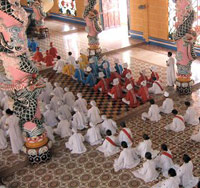 However,
not all of the Muslims migrated;
some chose to stay in the
central provinces of Vietnam
such as Nha Trang, Phan Rang,
Phan Ri, and Phan Thit. Because
of their isolation from other
Muslim communities, their Islam
was strongly influenced by
Hinduism and Buddhism, and their
descendants over time lost the
Islam which originally came to
Vietnam. However,
not all of the Muslims migrated;
some chose to stay in the
central provinces of Vietnam
such as Nha Trang, Phan Rang,
Phan Ri, and Phan Thit. Because
of their isolation from other
Muslim communities, their Islam
was strongly influenced by
Hinduism and Buddhism, and their
descendants over time lost the
Islam which originally came to
Vietnam.
Speaking of the early trade
routes, Hourani observed that
the people of Vietnam were
exposed to Muslim traders in the
7th century:
After the passage through the
Malacca Strait, known to the
Arabs by its Malay name of
Salaht (“Strait”), a call was
made at Tiuman Island. Next
cutting across to Indo-China,
they stopped at ports in Sanf,
the Champa kingdom in the
eastern coastal, then at an
island off the coast, known as
Sanf Fulaw (corrupted in our
texts to “Sandar Fulat”). From
there vessels might coast round
the Gulf of Tongking to Hanoi,
known as Luqin, before they made
for their final destination,
Canton, which was called Khanfu.
Maspero opined that some Champa
had already accepted Islam
towards the end of the Sung
dynasty from the 10th to the
11th century. Recent excavations
have uncovered two gravestones
of Champa Muslims with Kufic
inscriptions dating back to
1030, which suggest that there
existed a Muslim Champa
community in the 10th century.
Malacca: 1400–1511
The first Muslim state to be
established on the Malayan
mainland was the state of
Malacca. By the end of the 14th
century, Parmeswara, a prince of
the Hindu state of Mujaphait in
Indonesia, migrated to Malaya
and captured the island of
Tumasik, turning it into a
pirate base from where to attack
ships. Ejected from Tumasik by
the Siamese who controlled the
area, Parmeswara settled in
Malacca, which grew from a small
fishing village to a major port.
As Siam was hostile to
Parmeswara, he sought the
protection of the Chinese and
established cordial relations
with the neighboring states of
Sumatra. Parmeswara married a
Muslim princess of the state of
Samudra Pasai in Sumatra and
accepted Islam, adopting the
name Muhammad Iskandar Shah.
Islam thus came to Malaya in the
15th century, and Iskandar Shah
died in 1424.
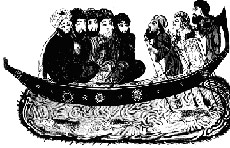 Iskander
Shah was succeeded by his son
Sri Maharaja, who ruled for 20
years. When he died, he left two
sons: Raja Kassim and Dewa Shah.
With the help of Malayan chiefs,
Dewa Shah took authority but was
overthrown by his brother Raja
who, upon taking office, took
the name Muzaffar Shah. Under
his authority Islam became the
state religion. Iskander
Shah was succeeded by his son
Sri Maharaja, who ruled for 20
years. When he died, he left two
sons: Raja Kassim and Dewa Shah.
With the help of Malayan chiefs,
Dewa Shah took authority but was
overthrown by his brother Raja
who, upon taking office, took
the name Muzaffar Shah. Under
his authority Islam became the
state religion.
Threatened by the growing
commercial strength of Malacca,
Siam attacked it by land and
sea. When this failed, Siam made
peace with Malacca by
recognizing its independence.
Muzaffar Shah ruled for 15 years
and died in 1459. His son Manzur
Shah took over, and it was under
his authority that Malacca
expanded, conquering the
neighboring states of Pahang,
Perak and Kelentan. In the
south, Johore and the islands
adjoining the peninsula were
brought under Malaccan control.
Campaigns were then taken
against Sumatra and the states
of Batak, Kokan, Siak, Kampar,
Indiragiri, and Jambi.
Manzur Shah took steps to
promote Islam, and Malacca
became the center from which
Islam spread into Southeast
Asia. He ruled for 18 years and
died in 1477, by which time
Malacca had become the strongest
state in Southeast Asia.
Manzur Shah was succeeded by his
son Alauddin Riyat Shah. He
adorned Malacca with various
public buildings and further
expanded the dominion of Islam,
spreading to Java, Sundar, the
Molucass, Brunei, and the
outlaying islands of Sumatra. He
ruled for 11 years and died in
1488.
Alauddin was followed up by
his son Mahmud Shah. He lacked
the vision of his father and
grandfather, so authority was
managed by the chief minister.
The Portuguese arrived in
Malacca in 1509 under the
auspices of trade, but merchants
from Goa, India, warned the
Malaccans of the Portuguese’
intention. They left
unsuccessful. In 1510 Mahmud
Shah had his chief minister
killed, which act led to a state
of chaos. The Portuguese
exploited this opportunity,
invaded, and captured Malacca in
1511.
Aceh: 1514–1599
After the occupation of Malacca,
the next Muslim state to rise
was Aceh in the western part of
Sumatra, in 1514, with a union
between the principalities of
Lamri and Aceh Darl-ul-Kamal,
under the authority of Ali
Mughayat Shah.
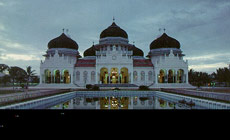 In
1524 Ali captured Pasai from the
Portuguese, and the state of
Aceh then included most of the
territories formerly under the
state of Sumatra Pasai. When
Malacca on the mainland was
captured by the Portuguese in
1517, it became inaccessible to
Muslim merchants and business
shifted to Aceh, turning it into
an extremely prosperous region.
Aceh thus became a rival power
to the Portuguese in Southeast
Asia. In
1524 Ali captured Pasai from the
Portuguese, and the state of
Aceh then included most of the
territories formerly under the
state of Sumatra Pasai. When
Malacca on the mainland was
captured by the Portuguese in
1517, it became inaccessible to
Muslim merchants and business
shifted to Aceh, turning it into
an extremely prosperous region.
Aceh thus became a rival power
to the Portuguese in Southeast
Asia.
Ali is noted as one of the
greatest rulers of the 16th
century. Not only was his rule
mild and just, but he maintained
a strong army and navy. He
encouraged the teaching of
Islam, and it was under his rule
that the religion spread from
the coastal areas into the
mainland. His rule lasted for 34
years and he died in 1548.
Ali was succeeded by his son
Alauddin Shah, under whose rule
Aceh expanded to include Aru and
Johore on the mainland. Alauddin
established good relations with
the Ottoman Turks and received
their help to obtain large guns.
Heavily armed, he took to
recapturing Malacca from the
Portuguese but failed. He ruled
for 23 years and died in 1571.
When Ali died, he was
succeeded by his son Ali Hayat
Shah, whose rule lacked vision.
Ali Hayat died in 1579 and was
succeeded by three equally poor
rulers, one after another, until
1588. Order was returned to the
area with the rule of Alauddin
Rayat Shah, who reorganized the
administration and ruled with
justice.
Demak: 15th–16th
Century
Java is the central island of
Indonesia. Islam first spread to
Sumatra in the 13th century, and
later in the 14th century it
spread from Sumatra to Java. The
Gujurat style tomb of Malik
Ibraham, a da`i who died in
1419, can be found there.
Another tomb that can be found
there is that of Princess Champa,
who died in 1448. She was the
wife of the ruler of Majaphit, a
Hindu state that was the
dominant power of Java. As a
Muslim woman she was unable to
marry a non-Muslim man, so it
seems that the ruler of
Mujaphait accepted Islam,
although his successors were
Hindus.
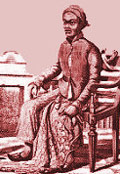 Chinese
accounts show that during the
early years of the 15th century,
the population of Java comprised
Muslims, Chinese, and Hindus.
The Muslims lived in the coastal
towns. Most of the Chinese were
Muslims, but the majority of
people were still Hindus. Chinese
accounts show that during the
early years of the 15th century,
the population of Java comprised
Muslims, Chinese, and Hindus.
The Muslims lived in the coastal
towns. Most of the Chinese were
Muslims, but the majority of
people were still Hindus.
The first Muslim state in
Java was the state of Demak,
established around 1500 by a
warrior called Radhan Paria.
Radhan conquered Cheribon and
some neighboring islands, and
then went on to south Sumatra,
capturing Palembang and Jabi. In
1511 Radhan headed a campaign
against the Portuguese in
Malacca but failed. Instead he
directed his efforts to the
Indian state of Mujaphait and in
1527 overthrew its last ruler.
Radhan died shortly thereafter,
having turned Demak into the
most dominant power in Java.
Radhan was succeeded by
Trengganu, under whose authority
the state of Demak gained
further importance. He
overpowered the states of
Mataram and Sanda Kalappa, and
under his authority Islam spread
to the mainland of Java. While
Radhan had previously conquered
Mujaphait, he did not completely
remove Hindu rule; thus a new,
smaller state arose, and at the
battle of Panarukan, Trengganu
died.
After his death a state of
confusion spread in Demak,
causing the state to divide into
two principalities, one with the
capital Demak, the other with
the capital Padong. As a result
the state lost its importance.
In 1578 the ruler of Padong
conquered Demak. Yet despite the
union, Demak was unable to
reclaim its previous glory. In
1586, the Sultan of Demak was
overthrown by his commander in
chief, who founded a new Muslim
state, Mataram.
Southeast Asian Islands:
15th–17th Centuries
The Moluccas: In the
Moluccas, now referred to as the
Spice Islands, Islam spread
during the late 15th century.
The first Muslim ruler was
Zain-ul-Abdin, who ruled from
1486 to 1500. The Portuguese
settled on the island in the
16th century and tried to
convert people to Christianity.
The people, however, chose
Islam. Zain-ul-Abdin is said to
have built a seven-story mosque
in Ambon.
Celebes: Islam spread to Celebes
in the early 17th century. The
Prince of Tallo accepted Islam
in 1605, after which he expanded
his territory to the states of
Bone, Coppeng, and Wajo, where
the people accepted Islam. It
was the Muslims of Celebes who
played an important role in the
battle against the Dutch in the
Moluccas. When the Portuguese
conquered Ambon, the Muslims
fled to Makasar. The Muslims of
Celebes fought against the Dutch
East India Company for many
years, resulting in the treaty
of Bongeaid in 1667 through
which the Dutch gained authority
and Makasar lost its importance.
East Borneo: Islam spread
from Celebes through the
preaching of two Muslim da`is—Datori
Bandang and Tuan Tunggang
Parangan—who arrived at Kutei
and converted the king, the
princes, and the people to
Islam. The king married a Muslim
princess from Java and
established a series of mosques
and schools to teach Islam.
In the early 16th century,
Bandjarmasin was the main
kingdom of South Borneo. A
dispute arose between two
princes, Samudra and Tumengung,
both of whom aspired to the
throne. During the conflict
Samudra sought the assistance of
the Muslim state of Demak in
Java. Demak promised assistance
on the condition that Samudra
would accept Islam. Samudra
agreed. Demak assisted him to
take rule, and he accepted
Islam, after which his people
also converted.
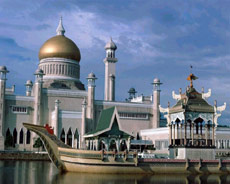 Brunei:
Islam spread through northwest
Borneo in the 15th century. The
first Muslim ruler of Brunei was
Awang Alakber Tabar, who took
the name Muhammad when he
accepted Islam. He married a
Muslim princess from Johor.
Throughout the 15th century,
Brunei was overshadowed by the
powerful state of Malacca. When
the Portuguese conquered Malacca
in 1511, many Malaccan Muslims
migrated to Brunei, raising
Brunei’s importance. Brunei:
Islam spread through northwest
Borneo in the 15th century. The
first Muslim ruler of Brunei was
Awang Alakber Tabar, who took
the name Muhammad when he
accepted Islam. He married a
Muslim princess from Johor.
Throughout the 15th century,
Brunei was overshadowed by the
powerful state of Malacca. When
the Portuguese conquered Malacca
in 1511, many Malaccan Muslims
migrated to Brunei, raising
Brunei’s importance.
When Magellan sailed to
Brunei in 1521, his Italian
captain, Pigafella, wrote an
account of the voyage. According
to this report, the Sultan of
Brunei was a man named Bulkiah
who lived in a fortified
residence surrounded by a brick
wall on which fifty canons were
mounted. Through its effective
administration, the rule of
Brunei was extended to the
greater part of Borneo and even
to the Sulu islands.
During the 16th century, the
Spanish spread their influence
to the Philippines and then
pushed southwards, which caused
Brunei to lose control over its
lands. When the Dutch occupied
south Borneo, Brunei was
confined by the Spanish and the
Dutch and became the small area
to the northwest of Borneo. The
Dutch trade monopoly strangled
trade with Brunei, and by the
17th century Brunei was known
for its piracy.
Sulu Islands: Islam spread to
these islands through two da`is:
Sharif Karim Al-Makhdum and Abu
Bakr. The prince of Bawansa,
Rafa Bainda, was the first ruler
of the islands to accept Islam.
Abu Bakr married one of his
daughters and succeeded his
father-in-law to the throne of
Bawsana.
The Philippines: Islam came
to these islands by way of
Sharif Kabungsuwam. He came from
Johor and settled in Mindanao,
where many people accepted
Islam. When the Spanish came to
the Philippines, they resisted
the spread of Islam to Manila.
War broke out between the
Muslims (Moros) and the Spanish,
which lasted over a hundred
years; the Muslims were unable
to gain political authority but
were nonetheless strong enough
not to be expelled from the
islands.
References:
Ul-Hassan, Masud.
History of Islam, Vol. II.
Islamic Publications, 1998.
Hourani, George. Arab Seafaring.
Princeton University Press,
1979.
Maspero, Rene Gaston Georges.
The Champa Kingdom: The History
of an Extinct Vietnamese
Culture, 1928. Cited by Pierre
Yves Manguin, “The Introduction
of Islam into Champa,” JMBRAS,
Vol. LVIII, Part 1, 1985.
The Spread of Islam in Southeast
Asia. Map. The Applied History
Research Group, University of
Calgary. Source :
http://islamonline.net |